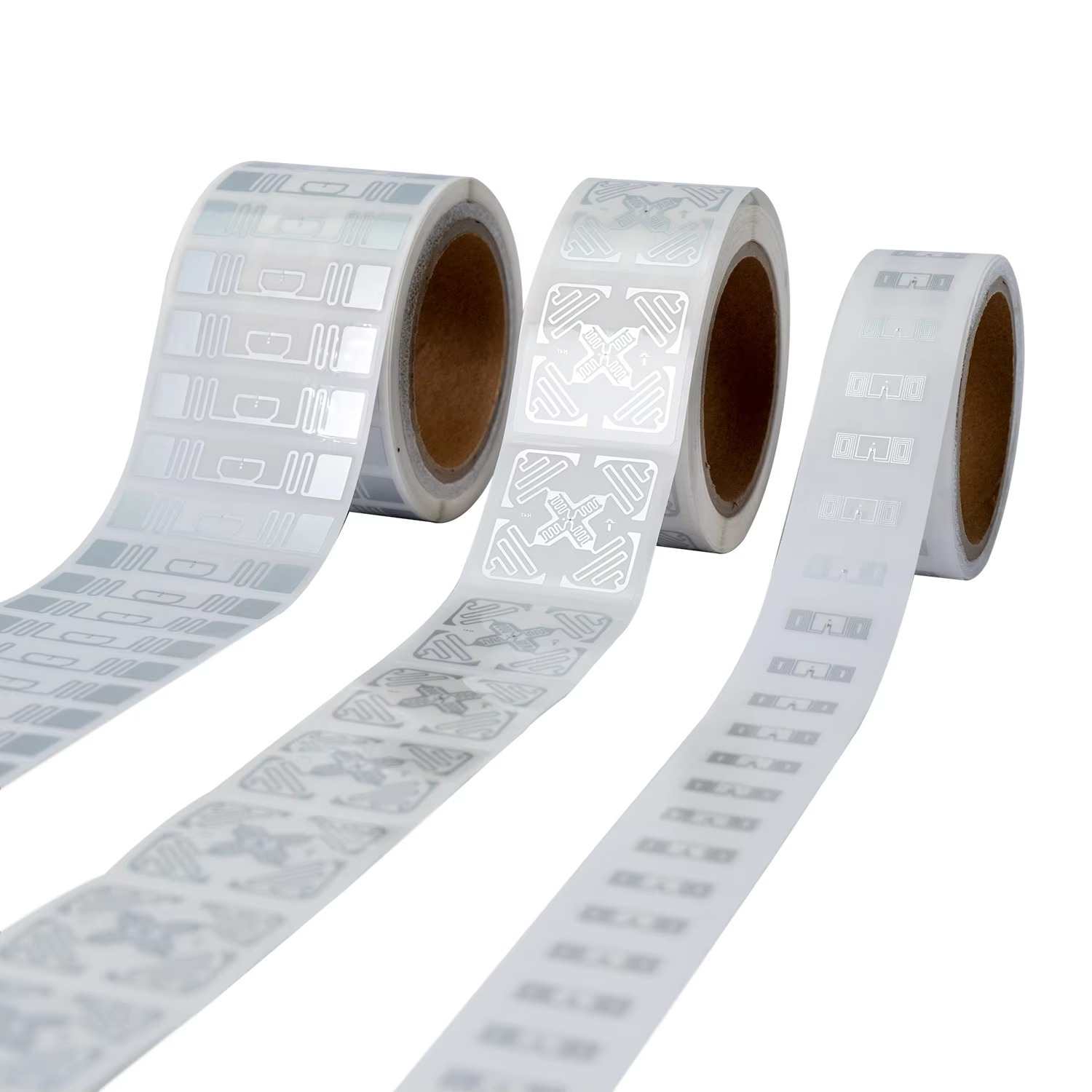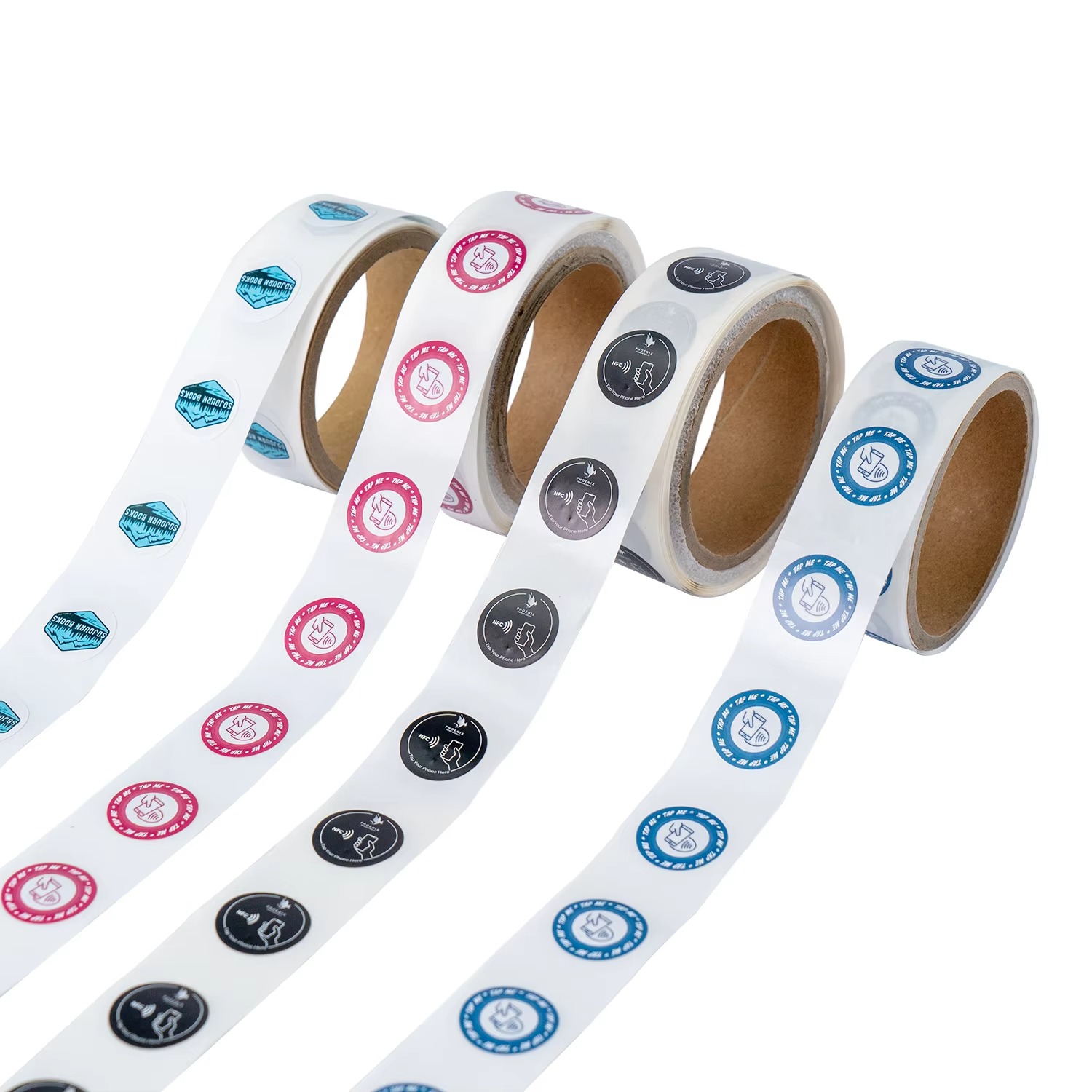
UHF RFID Label: Revolutionizing Warehouse Management in Logistics
Discover how UHF RFID labels streamline logistics and inventory management, enhancing efficiency, accuracy, and sustainability in your operations.
RFID (Radio Frequency Identification) labels and tags are an innovative technology used for tracking and managing assets with ease and efficiency. With their growing use in industries such as supply chain management, retail, and healthcare, these labels simplify complex operations like inventory tracking, product authentication, and much more. In this article, we’ll explore how RFID labels work, why they’re transforming asset management, and how they differ from traditional barcode systems.
RFID labels, also known as smart labels, consist of a small RFID tag embedded within a label. These tags contain a microchip that stores data and an antenna to transmit information. RFID labels are used for applications such as asset tracking, inventory management, and product authentication.
RFID labels stand out from traditional tracking methods because they don’t require a direct line of sight for scanning, allowing businesses to automate processes and improve operational efficiency.
RFID labels function by emitting radio waves between the tag and an RFID reader. Each label contains an integrated circuit (IC), an antenna, and a substrate. When the reader sends out a radio frequency signal, the tag’s antenna picks it up, and the IC processes it. This communication enables data transfer, such as the product’s identification, location, or status.
RFID tags come in two primary types: passive and active. Passive RFID tags, which are more commonly used, require power from the reader to activate, while active RFID tags contain their own battery and can transmit signals over longer distances.
When selecting RFID labels, it’s essential to understand the different types available based on frequency ranges and tag design. The main types include:
Operating in the range of 860-960 MHz, UHF tags are ideal for long-range applications. These tags are commonly used in supply chain management and can have read ranges of up to 10 meters.
With a frequency of 13.56 MHz, HF tags are suitable for shorter-range applications like NFC (Near Field Communication) and contactless payments. These tags work well in environments where high accuracy is required.
A subtype of HF tags, NFC tags allow for communication between devices like smartphones, enabling users to exchange data by tapping or bringing the devices close together.
Many industries benefit from implementing RFID solutions, particularly in asset management, retail, and logistics. Asset tracking ensures efficient management of valuable equipment, reducing losses and improving accuracy. In retail, inventory management is streamlined with real-time stock updates, reducing errors and improving customer satisfaction.
Healthcare facilities use RFID for tracking medical equipment, ensuring patient safety and compliance. Custom RFID tags can be designed to meet specific needs, such as identifying assets in harsh environmental conditions or embedding tags in products for anti-theft purposes.
Customization allows RFID labels to cater to unique business requirements. Factors that can be customized include:
These custom options provide flexibility for businesses with unique tagging and tracking requirements.
The process of printing and encoding RFID labels is key to ensuring they work correctly in your system. Specialized RFID printers, like Zebra RFID printers, allow for the simultaneous printing of visual information (such as barcodes) and encoding data onto the RFID chip embedded in the label.
Thermal transfer printing is commonly used to print RFID labels. This method is known for its durability and can produce labels that withstand harsh environments, such as extreme temperatures or humidity.
Understanding the difference between UHF and HF RFID tags is crucial for selecting the right solution. UHF tags are better suited for long-range tracking, making them ideal for supply chain management. They are used in warehouse management, logistics, and asset tracking due to their ability to cover greater distances and scan multiple items simultaneously.
On the other hand, HF RFID tags are typically used for shorter-range, high-precision applications like contactless payments and access control systems. These tags are more suited to environments that require close-range scanning with higher accuracy.
RFID labels offer several advantages over traditional tracking methods like barcodes:
These benefits help businesses reduce costs, improve accuracy, and optimize processes across various applications.
While both RFID and barcode labels serve as asset identification tools, RFID labels offer several key advantages:
However, barcodes are still widely used because they are cost-effective for businesses with simpler needs and don’t require the investment of an RFID system.
When selecting an RFID label, consider the following factors:
Understanding these requirements will help you select a label that offers optimal performance for your specific use case.
RFID labels are transforming the way businesses manage and track assets. From their ability to scan multiple items without line of sight to their customizable designs, RFID technology offers flexibility and efficiency in various industries. Whether you’re in retail, healthcare, or logistics, RFID tags can improve inventory management, reduce costs, and provide real-time data that enhances decision-making.
Newest trends and common knowledge in RFID laundry tags.

Discover how UHF RFID labels streamline logistics and inventory management, enhancing efficiency, accuracy, and sustainability in your operations.

Glass Tube RFID Tags are at the forefront of this revolution, offering a reliable and versatile method for tracking and identifying assets.

In today’s retail landscape, RFID technology revolutionizes inventory management and customer engagement, offering innovative solutions for seamless shopping experiences and efficient operations.
Didn’t find what you want? Ask our manager for help!